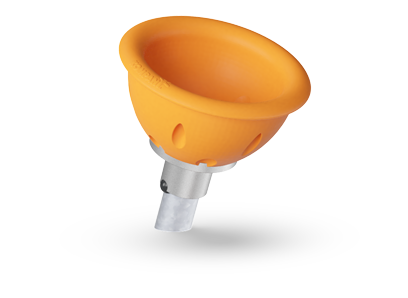
ELE400024
Spinner Bowl
- +3
4 - 12 Years
13.8 m2
1 Users
Different playground sizes for different spaces

Creating an ideal playground requires careful planning and consideration of various factors to meet the needs of all users. Understanding the type of playground your community needs is crucial in determining the appropriate size and dimensions. If the playground is too small, it may lack sufficient variety in play activities, leading to overcrowding. Conversely, a playground that is too large can feel empty, even during busy times, and may fail to engage children in interactive play due to the abundance of space.
There is no one-size-fits-all rule for playground size; it depends on the surrounding environment and the needs of the users. For example, accommodating a large number of children across various age groups may require a bigger playground with ample space and diverse activities. Conversely, a smaller playground can be ideal for a daycare catering to toddlers.
This guide explores typical playground sizes, equipment choices, and considerations for different settings, such as schools and public parks. With over 50 years of experience in and installing playgrounds, KOMPAN is here to help guide you through the process to ensure you create the perfect playground for your community.

Small playgrounds are ideal for compact spaces like urban areas, rooftops, daycares, or small community parks. Typically ranging from 50 to 150 square meters, they can offer a variety of play activities through thoughtful design and multifunctional equipment. These playgrounds often cater to specific age groups, so if you need to accommodate a broader age range, a larger playground with more diverse equipment may be necessary.
Examples of equipment: Compact play structures, small slides, swings and climbing walls
User capacity: Suitable for up to 20 children

Medium-sized playgrounds, ranging from 150 to 300 square meters, balance diverse play options with space efficiency. Commonly found in suburban areas, schoolyards, and larger community parks, they accommodate a range of equipment and serve various age groups. This size helps prevent overcrowding and allows for creative layouts, including distinct play zones and sensory playground equipment. While they may be pricier than smaller playgrounds, they deliver significant value in both functionality and play experience.
Example of Equipment to choose: Larger play structures, multiple slides, swings, merry-go-rounds, seesaws, sensory playground equipment like play panels.
User Capacity: Can accommodate 20-50 children.
Large playgrounds, ranging from 300 to 900 square meters or more, offer extensive play options and accommodate a larger number of users. Often located in regional parks, large community centers, and expansive school grounds, these playgrounds support a wide variety of equipment and activities, catering to all age groups and interests. Their ample space allows for features such as multisport areas or outdoor gym equipment for older children and adults. Serving as significant community hubs, large playgrounds foster social interaction and often become central gathering spots for families and the broader community.
Example of Equipment to choose: Comprehensive play structures, multiple swing sets, large slides, climbing towers, and pickleball courts
User Capacity: Suitable for 50+ children and adults

Get the overview on your playground equipment's dimensions
Understanding the dimensions of specific playground equipment is crucial for designing a functional and safe play area. By adding products to your favorites, you can see the total space required for those selections. Adjusting your choices by adding or removing items updates the space requirements, allowing you to refine your plans based on the available area.
Additionally, our products come with , providing all the specifications needed to design the ideal playground for your space requirements
The average size of a playground varies based on the setting. Small playgrounds range from 50 to 150 square meters, medium playgrounds from 150 to 300 square meters, and large playgrounds can be 300 to 900 square meters or more.
A good rule of thumb is to allocate 4-7 square meters per child. This ensures enough space for safe play and helps prevent overcrowding.
The size of your playground depends on its type, but some common examples include:
School Playgrounds: Typically 250 to 500 square meters.
Community Playgrounds: Usually 400 to 900 square meters or more.
Public Parks: Vary widely but may exceed 900 square meters or more to serve a broad community
The size of a playground is crucial for several reasons:
Budget Allocation: Larger playgrounds require a higher budget
Design Considerations: Space influences equipment selection and layout
Play Value & Capacity: Adequate space enhances the play experience
Community Satisfaction: Meeting community needs ensures higher usage and satisfaction